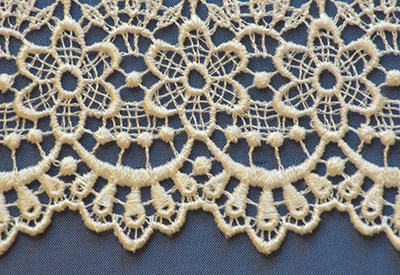It is unclear as to where lace was first developed. Germany, France, Belgium, Italy and Spain have all claimed that they were the location where lace originated. However, it was noted that nuns in the convents of central and southern Europe practiced cutwork, a version of lace slightly different from what we see today. The material was designed for altar decorations and robes and was regarded as the insignia of rank and station.
Over time, lace became more intricate, hoping to stay away from the harsh simplicity of the times. Toward the end of the 16th century, there was an increasing demand for lace in fashion. It was used to line gloves, shoe roses, jackets, sashes and surface decoration for other garments.
The first machine-made lace was created at the end of the eighteenth century, when the machines were constantly improved upon, helping to make lace even more intricate and complex. By 1870, almost every type of handmade lace had a machine-made copy. Handmade lace disappeared by 1900, however, there are still a few parts of the world where handmade lace is still produced. Usually, it’s often a craft undertaken for pleasure.









